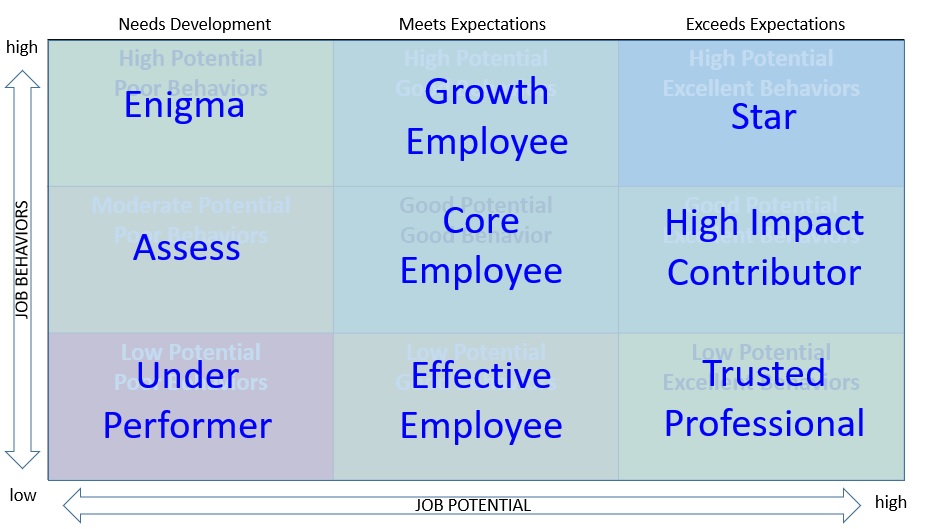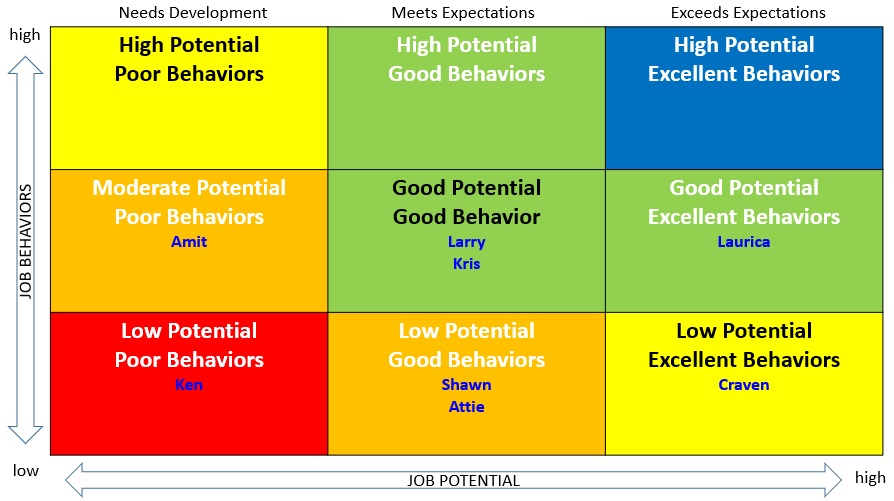Are you clear who you’re going to invest more time in this year? Are the top performers evident within your team or department?
Hi, I’m Peter Nichol, Data Science CIO.
If you haven’t already subscribed to my newsletter, please check out it at newsletter.datasciencecio.com. This is where I provide custom content to subscribers for FREE.
Are you a business leader trying to figure out how to define your role? You’re in luck. I’ve just designed a course titled, Define Your Role for BRM Success! In this course, you’ll learn how to define your role in the organization and maximize your effectiveness as a BRM.
Why use the 9 blocker model?
Today, we’re going to get a better understanding of how to evaluate members of your team quickly. You might have heard of the Nine Box Talent Review Model, commonly referred to as “9 blocker” (because the model has nine core blocks) or “9 box matrix.” McKinsey created this model in the 1970s to help GE prioritize investments across its nearly 200 business units. They centered the model around industry attractiveness and competitive strength as their two primary dimensions. Our model is an extension of the McKinsey model with a twist. In our model, we’ll use job potential and job behaviors as our two major dimensions.
So, why is this model helpful? First, it provides a simple framework by which to evaluate team members quickly. Whether they’re high-potential or need some additional help, this model offers an efficient classification. Second, it’s a consistent way to quickly assess how an individual is doing and if you should be investing time in them.
Illustration 1.0 Nine Box Talent Review Model Template

How is the 9 blocker interpreted?
So, how does it work? On the x-axis, we evaluate the team member’s job potential, and on the y-axis, we assess the team member’s job behaviors. In the lower-left quadrant, we classify team members with low potential and poor performance. In the upper right quadrant, we have high-potential and excellent performance. And, of course, the quadrants in between have a myriad of different combinations of those two.
Illustration 2.0 Nine Box Talent Review Model Interpreted

How is this model applied in practice?
Many approaches and techniques leverage the 9-blocker model to evaluate staff. I’ll share my process and the steps behind it.
- Identify all employees you want to assess.
- Choose two dimensions that best represent your environment.
- Classify each team member into one of the nine blocks.
- Review to assure that team members are actually in the correct box.
- Confirm that the categorization aligns with the preferred investment for each team member.
Identify captures a list of all the team members that you believe are in scope for the assessment. For example, if a new team member joined the team just a week prior, it’s too early to evaluate that individual. You’ll have an opportunity to assess their performance during the next round of performance reviews. Choose is one of the most critical steps. It’s essential to think through what dimensions will best represent your initiative. For example, if you’re targeting talent development, focus on “Talent Development” and “Performance.” There are a lot of dimension permutations when applying this model:
- Ability and performance
- Employee potential and performance
- Leadership potential and performance
- Engagement and performance
Classify simply slots each team member into one of the blocks based on the two dimensions selected. Review asks the assessor to take another look. Oftentimes, single events tend to cloud judgment or introduce confirmation bias. This step ensures that the complete picture of the team member is considered. Confirm is similar to the Review step. However, in the confirm step, it’s vital to look at your categorization based not only on performance but also on how much you want to invest financially in a team member’s growth.
Illustration 3.0 Nine Box Talent Review Model Example

This model can also be leveraged to classify team members into three main buckets:
- Lower left – correct or manage out
- Middle – core performers
- Upper right – ready for the next-level job
Additionally, it’s easier to see the blocks in three main sections using this model. This approach helps quickly classify a team member as performing or not and then narrows down that individual’s performance within that column:
- Far-left column – below performance standards
- Middle column – meets performance standards
- Far-right column – exceeds performance standards
How to manage training budgets using the 9 box matrix?
You ranked your team. You now have a good idea of how each individual performs and how they perform in comparison to other team members.
We’re already at mid-year. Have you even put a dent in your annual training budget? It gets better. We can use this model and start to evaluate how we’ll invest our annual training dollars. It’s easier than you think to use the 9-blocker model to help predict how training and dollars should be allocated. We spend 90% of our time managing the problems, and 10% of our time managing “the good” as leaders. It’s just the nature of the business that those problems consume the majority of our time, leaving little room for investing in those high-potential employees. Budgets should be divided by the number of members on the team. Why force someone to go to training who has zero interest? Additionally, if you reward that individual with paid training, it reinforces the right behaviors.
Illustration 4.0 Nine Box Talent Review Model For Training Investments

I’d like to share a training guide on how to budget for employee training if you have only $100 to spend. I use $100 because it can be easily converted into a percent. Here’s how it works. Let’s assume that you budget $10,000 for each individual on the team. You have 10 team members, which makes up an annual training budget of $100,000. Do you distribute this evenly, irrespective of performance? No.
The upper-right performance (high potential and excellent behaviors) would earn 100% of that budget—in this case, $10,000. However, a team member that’s in lower-left performance (low potential and poor behaviors) would only earn 5% of that budget or $500. This model aligns with a merit-based performance system for training and investment dollars.
As you move through this year and think about distributing your training budget, consider using a 9 blocker to make that job more manageable. Who are your top performers? Are you taking the time today to invest in those resources?
Leaders often get dragged into the weeds and ultimately spend a lot of time with individuals that, unfortunately, need a lot of help or are underperforming. It’s natural to focus on the problems, as that’s required to keep things running smoothly. However, those high performers need to be coached and guided as well. For example, suppose you want to decrease attrition and increase retention. In that case, you need to have a plan to improve training and provide additional opportunities to people who need to be brought up to average as well as to people who are trying to get to that excellent level.
Here are the images in higher quality for download.
If you found this article helpful, that’s great! Check out my books, Think Lead Disrupt and Leading with Value. They were published in early 2021 and are available on Amazon and at http://www.datsciencecio.com/shop for author-signed copies!
Hi, I’m Peter Nichol, Data Science CIO. Have a great day!
